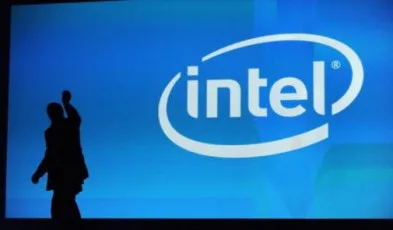The CAFC overturned Intel Corporation’s $2.18 billion patent infringement conviction and sided with VLSI Technology LLC. This decision has sent shockwaves throughout the technology sector, and it has caused a change in the status quo.
These decisions have caused waves of disbelief to spread throughout the technological industry. These decisions have prompted waves of doubt to sweep throughout the technical industry, which has produced widespread turmoil. Those decisions have caused waves of uncertainty in the tech industry, causing turmoil. Intel achieved a major victory, and the precedent-setting ruling might affect technology industry intellectual property enforcement.
Read More
GTA 6 Trailer Release Time Rockstar Announces the December
There is a possibility that the ruling will establish a new standard. Intel has effectively established a precedent by putting this verdict into effect. Intel has generated a sense of satisfaction for the corporation as a result of the fact that it has been able to successfully preserve its intellectual property rights.
The legal dispute between Intel and VLSI Technology LLC revolved around its two patents. Intel and VLSI Intel sued this time. Intel’s semiconductor chips violated these patents, according to VLSI, which was illegal. VLSI added that this was illegal. In 2021, a Waco, Texas, jury decided the verdict.

A jury decided that Intel had violated a patent and ordered the company to pay VLSI an astounding $2.18 billion in penalties. The jury found Intel guilty of patent infringement. There was a decision that went in favor of VLSI. There was a choice that worked out in favor of very large-scale integration (VLSI). Legal professionals are in complete agreement that this case is among the most important patent verdicts in the annals of United States history. This is the consensus of the vast majority of legal experts. The majority of people in the legal profession subscribe to this point of view.
Immediately following the verdict, Intel submitted an appeal to the CAFC, arguing that the patents held by VLSI were invalid and that the chips it manufactured did not infringe on any genuine claims. The CAFC agreed with Intel’s position. The CAFC came to the conclusion that the patents were not legitimate. Intel’s argument was not successful in its execution, which should have been successful. The CAFC arrived at a determination that was in agreement with Intel through the process of taking into consideration both of the issues.
Intel VLSI Patents:
After an investigation, the Canada Intellectual Property Commission’s (CAFC) found VLSI’s patents invalid or did not infringe on Intel’s CPUs. This will lead to a historic choice.
The following list includes some of the more significant factors that contribute to the significance of the CAFC’s ruling:
Due to the fact that it overturns the verdict, it serves as a much-needed check on the risk of patent damages awards coming in disproportionate amounts. Given that it overturns the ruling, this is the reason. This is a result of the fact that it completely overturned one of the most important patent verdicts in the whole history of the judicial system in the United States of America.
It is made certain that patents can only be used for the purpose of protecting ideas that are truly unique and not easily obvious to the average person. This is done in order to guarantee that patents are only used for the purpose of protecting ideas that are truly unique. To ensure that patents are only used for the goal of protecting innovations, a more stringent set of standards is being created for the validity of patents. Additionally, it is being made absolutely certain that patents can only be used for this reason.
This course will teach you how to interpret complex patent claims, which will reduce technology industry uncertainty and boost creativity. Additionally, it explains patent claim reading. It also explains how to read patent claims with confusing subject matter.
The CAFC’s ruling could affect the technology industry’s manufacturing sector beyond Intel and VLSI’s dispute. This is because the decision has the capacity to have a significant impact on the manufacturing sector.
Patent Assertion Entities:
This can stop patent assertion entities (PAEs), or patent trolls, from suing technology companies for patent infringement. Patent trolls are a type of patent assertion entity. It is common practice to refer to organizations that claim patents as patent trolls. This is because patent trolls are known to cause legal trouble.
Its ability to encourage technological enterprises to collaborate and cross-license to avoid costly patent conflicts may be advantageous.
If corporations worry less about infringing broad or invalid patents, they may be more inventive in technology. This would open the door for more inventiveness in the technology industry. Consequently, this would make it easier for the technology sector to expand into one that is more imaginative. Patents protect intellectual property, which is why they are so popular.
A landmark ruling by the Canadian Administrative and Financial Court (CAFC) could change technological intellectual property laws. All things considered, this choice has the potential to bring about a significant change in the environment. The decision represents a significant step forward in the right direction (the right approach).
This is a triumph for Intel, innovation, and stricter patent claims and ruling scrutiny. Not only has Intel triumphed, but innovation has also triumphed. Keeping intellectual property rights should not come at the expense of innovation and competition, as the verdict reminds us. Furthermore, it is of the utmost importance to underline that this verdict serves as a timely reminder.
Share this content: